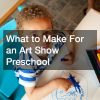
Museum education programs offer a unique and enriching learning experience that extends beyond the traditional classroom setting. By integrating hands-on activities, interactive exhibits, and expert-led tours, these programs provide students with opportunities to engage deeply with various subjects, from history and art to science and technology. Here are ten significant benefits of museum education for students and how these programs can enhance their educational journey.

1. Enhanced Learning Through Hands-On Experiences
Museum education programs allow students to engage with artifacts, exhibits, and interactive displays that bring abstract concepts to life. Hands-on experiences, such as handling historical objects or conducting science experiments, help students better understand and retain complex information. This experiential learning approach makes subjects more tangible and memorable.
2. Exposure to Diverse Perspectives
Museums often showcase a wide range of cultures, historical periods, and scientific disciplines. By participating in museum education programs, students gain exposure to diverse perspectives and learn about different cultures, traditions, and viewpoints. This exposure fosters greater cultural awareness and helps students develop a more well-rounded understanding of the world.
3. Development of Critical Thinking Skills
Museum education programs encourage students to analyze and interpret information independently. Through activities such as examining historical artifacts or analyzing works of art, students practice critical thinking and problem-solving skills. These skills are essential for academic success and are transferable to various real-life situations.
4. Increased Engagement and Motivation
The dynamic and interactive nature of museum education programs often captivates students’ interest more effectively than in traditional classroom settings. The opportunity to explore exhibits and participate in engaging activities can increase students’ motivation to learn and foster a positive attitude toward education. This increased engagement often leads to improved academic performance and a deeper interest in the subject matter.
5. Enhanced Visual and Spatial Learning
Many museum education programs incorporate visual and spatial elements that aid in learning. By interacting with 3D models, visual displays, and immersive environments, students develop better spatial awareness and visual learning skills. These abilities are particularly beneficial in fields such as art, architecture, and science.
6. Encouragement of Collaborative Learning
Museum education programs often involve group activities and collaborative projects. Working with peers to explore exhibits, solve problems, or create presentations fosters teamwork and communication skills. Collaborative learning also enhances students’ ability to share ideas and learn from one another.
7. Connection to Real-World Applications
Museum education programs frequently highlight the real-world applications of academic concepts. By connecting historical events, scientific discoveries, or artistic techniques to current issues and innovations, students gain a better understanding of how their studies relate to the broader world. This connection helps students see the relevance of their education and its impact on society.
8. Inspiration for Creativity and Innovation
Museums are often hubs of creativity and innovation, showcasing groundbreaking works of art, cutting-edge scientific discoveries, and historical achievements. Exposure to such environments can inspire students to think creatively and explore their own innovative ideas. Museum education programs encourage students to develop their creative abilities and envision new possibilities.
9. Improved Research and Presentation Skills
Many museum education programs involve research projects and presentations. Students may be tasked with researching specific topics, creating visual displays, or presenting their findings to their peers. These activities help students develop essential research and presentation skills, which are valuable for academic success and future careers.
10. Fostering a Lifelong Love of Learning
Engaging with museum education programs can instill a lifelong love of learning in students. The opportunity to explore fascinating exhibits, interact with experts, and participate in enjoyable activities fosters curiosity and a desire to continue learning outside the classroom. This enthusiasm for learning can positively impact students’ educational pursuits and personal growth throughout their lives.
Museum education programs offer numerous benefits for students, including enhanced learning through hands-on experiences, exposure to diverse perspectives, and the development of critical thinking skills. By increasing engagement and motivation, enhancing visual and spatial learning, and encouraging collaborative learning, these programs contribute to students’ overall academic and personal growth. Additionally, they provide valuable real-world connections, inspire creativity and innovation, improve research and presentation skills, and foster a lifelong love of learning. Integrating museum education programs into students’ educational experiences enriches their learning journey and prepares them for success in various aspects of life.

